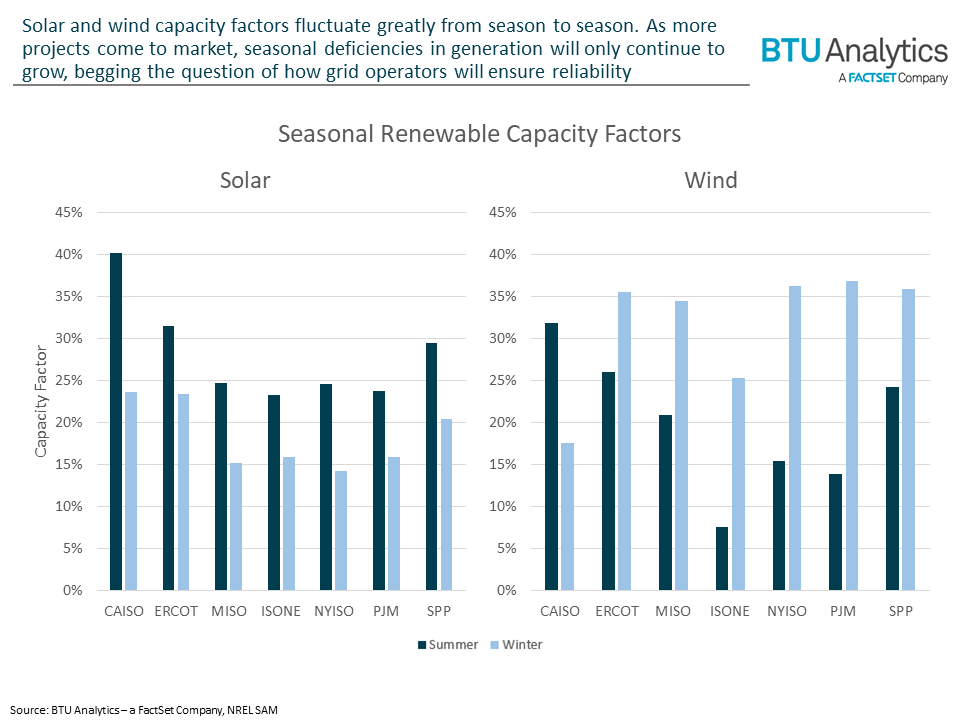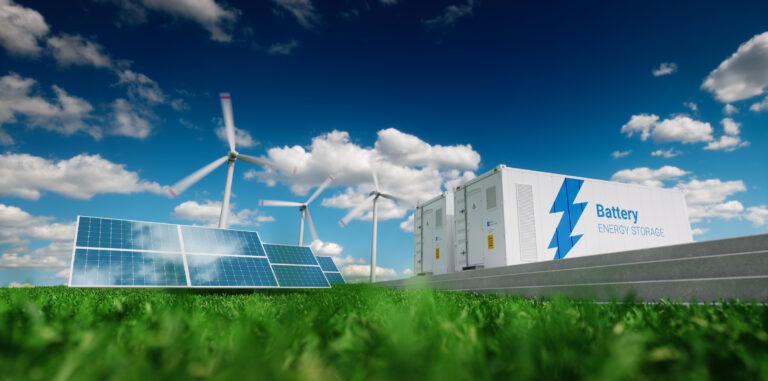In the US, investment into lithium-ion storage continues to accelerate with the hopes of solving intraday intermittency issues. With the capability to store renewable generation that would otherwise be curtailed, battery energy storage provides the opportunity for wind and solar resources to serve evening peak load traditionally met by fossil fuels and imports. This technology is crucial to support the decarbonization of many sectors, however intraday intermittency isn’t the only metric that should raise concerns. In today’s Energy Market Insight, we’ll discuss the need for long-duration storage and one of the most likely candidates: pumped storage.
Previously discussed, lithium-ion storage in CAISO and ERCOT has been evolving in the daily market to support the growth of wind and solar. However, the figure below highlights the seasonal challenges that arise as renewable penetrations continue to grow.

With wind and solar projected to represent sizeable portions of regional fuel mixes, intra-day battery storage alone will not be sufficient to ensure grid reliability while phasing out fossil fuels. Today’s battery storage fleet durations’ range from 0 – 4 hours, which is better suited for serving peak load. The buildout required of battery storage, as we know it today, would be entirely impractical in meeting seasonal generation differences. Therefore, long-duration storage is necessary as it provides the benefit of sustained generation that can serve peak load while also alleviating seasonal deficiencies.
In the US, one form of long-duration storage has been dominating for decades: pumped storage hydropower. Pumping during peak solar hours, pumped storage systems act as load. Purchasing electricity at low-cost intervals to move water from lower to upper reservoirs. When demand is high, water is released from the upper reservoir to generate electricity that can serve load for extended durations. Representing over 80% of US operational storage capacity, pumped storage is one of the oldest forms of energy storage but continues to hold its presence in US energy markets.

Pumped storage hasn’t seen substantial development in decades. With a large environmental and ecological footprint, pumped storage facilities are subject to extensive regulatory processes. Rather than invest in regulatory-intensive technologies such as pumped storage, ISO market mechanisms have incentivized development of intra-day storage, with over 21 GW of new battery energy storage systems (BESS) likely to come online within the next decade. Although this development is a huge leap towards decarbonizing the grid, short-duration storage may only be a temporary solution for growing renewable fleets.
Across the US, it is likely investments will increase for long-duration storage options, like pumped storage, to account for the seasonal deficiencies that solar and wind generation will bring. Although recent pumped storage development has been low, FERC permit and licensing data shows that pumped storage may see another surge of growth.

Pumped storage is not alone; research and development into other long-duration storage technologies is already underway with stacked blocks, compressed air, and new battery chemistries representing only a few of the many new technologies that have been announced. However, with a historical presence in the US, pumped storage may be next in the development pipeline to ensure that both climate goals and grid reliability are successfully achieved.









